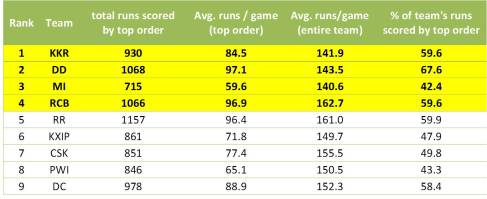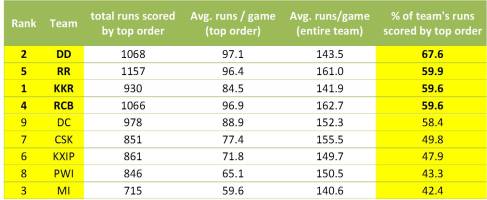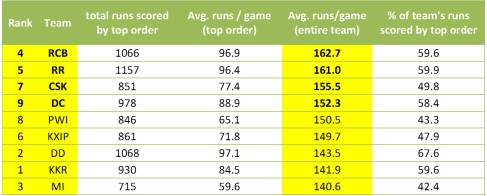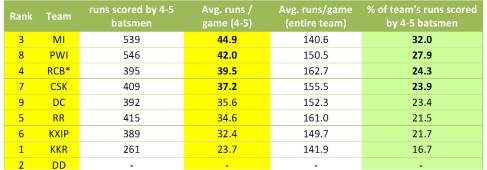This post first appeared in Clearcricket. The idea of a piece on MS Dhoni was initiated by Subash Jayaraman, founder and contributor to Clearcricket (@thecricketcouch on Twitter).
*****
I remember the day very very clearly.
It was the 8th of November 2008. A Saturday. It was the third day of the final Test match of the series (at Nagpur) between India and Australia. I had watched the most gripping session of Test cricket in my Melbourne home. Having commenced the day on 189 for 2 off just 49 overs (at 3.85 runs per over), chasing India’s first innings total of 441 all out, Australia had ended the previous day on an aggressive high. The first few balls of that first session of play on day-3 set the scene for that session, and that day.
My jaw hit the floor. “Was this Team India I was seeing?”, I asked myself.
I did not move from my place on the couch in that session — it produced just 42 runs from 25 overs at a run-rate of 1.68 runs per over! Dull cricket? Yet, I remember that session so vividly.
So what made it a gripping session?
Through the morning session India captain MS Dhoni set a 8-1 field with 8 fielders on the off-side and a lone leg-side fielder at square-leg. The bowlers who had been slapped around the previous evening, curbed their attacking lines and bowled a disciplined line to Mike Hussey and Simon Katich the two Australian left-handers. At the time this was thought of as a “defensive” tactic. The Australians were shackled. Their attacking shots were curbed. And they did not quite know how to combat India’s strategy — it took them a while to figure out that there was, indeed, a strategy! An Indian team did not just “rock up”. They were playing “thinking cricket”. The Australians were like rabbits caught in the headlights. In the process, Australia had lost a wicket too; Simon Katich lost his composure and got out — he had been out-foxed.
Rather than remove his foot from the pedal, in the post-lunch session, Dhoni continued his strategy in a ruthless and clinical manner. For Clarke he set a 6-3 field but still bowled a “defensive line”. In that post-lunch session, Australia scored 49 runs in 29 overs and had lost 3 wickets.
Many commentators — including Ian Chappell and Alan Border — attribute the loss in this Nagpur Test match to Ricky Ponting’s strange captaincy in the India second innings, when he had Michael Hussey and Cameron White bowling in tandem in a bid to catch up on Australia’s bad over-rate! However, I strongly believe that it was those opening sessions of Day-3 that led to Australia losing that Test Match. India acquired an Australia-like attitude, caught the match by the scruff of its neck, and did not let go. It called for mean-mindedness; an Australia-like bloody-mindedness. It called for a surrender of ego and pride. It called for discipline.
MS Dhoni’s tactics were rubbished by Ian Chappel, who asked for a rule-change to curb defensive and “boring cricket”.
For me, that was “exciting and gripping cricket” and not “boring cricket”. I had watched every single ball. There was drama and emotion. There was a battle; a battle of nerves; a battle for survival; a battle for supremacy; a battle to ascertain who would blink first. They remain the most gripping sessions of Test cricket I have seen in the last two years! Both sessions were “attacking sessions” in my view.
Dhoni had a clear strategy. He had a firm plan in his mind. He appeared to have communicated his plan very clearly to his personnel and got them to buy into his vision. His players responded to his plan, even though it meant that they had to swallow their ego and pride. The plan could backfire badly if it failed. Dhoni had to ensure that it was executed to perfection. Whether Dhoni had a plan-B or not, we never know. But his plan-A worked to perfection. And once he saw that it was working, he did not relent. He had placed his foot on the jugular and kept it pressed there. He had done to the Australians what they did to so many teams in the previous 15 years!
This was Test match cricket at its very best.
A few years back, in 2001, in that series, Sourav Ganguly had asked left-arm spinner, Nilesh Kulkarni, to bowl a negative line outside leg-stump from one end (especially in the second innings) while he attacked the Australians with Harbhajan Singh at the opposite end, in a must-win match at Chennai.
This was similar. Only better!
*****
MS Dhoni seems to have an astute, canny, discerning and incisive sense of his place in Indian cricket history. He comes across as an extremely perspicacious individual. Perhaps it is because of his small-town upbringing. Perhaps it is because a sense of sagacious, earthy and incisive unpretentiousness is ingrained in him due to his roots and upbringing.
That Test match in Nagpur witnessed two other moments that are enduring, stirring and indelible in my memory.
Towards the end of the Nagpur Test match, MS Dhoni handed over the captaincy reins to a man who had started India’s march towards the top of the tree at the start of the decade. Sourav Ganguly marshaled the troops and rang in the bowling changes as India marched towards a Test and series victory in that 2008 series. It was a wonderful and honest gesture of extreme appreciation and perhaps even respect by Dhoni towards a man who had been nudged towards retirement. Ganguly was playing in his last Test Match. The match report reads, “A less secure man would have wanted to hog the limelight, but by ceding space to one of Indian cricket’s all-time greats for a couple of overs, Dhoni showed just how aware he was of the bigger picture.”
If that was emotionally stirring and if that was a signal of a man who was totally self-assured, what followed at the post-match ceremony tugged at the heart-strings even more. Dhoni called Anil Kumble to the victory dais to accept the Boarder-Gavaskar trophy. After all, it was during the series that Anil Kumble had retired.
Dhoni had scripted the strongest and most compelling farewell gestures to Ganguly and Kumble. This wasn’t, in my view, false humility. This wasn’t, in my view the act of a man devaluing his own accomplishments for the sake of receiving applause, accolade or adulation from others. His humility in these actions were real. He expected neither praise nor favors. These were, I believe, anchored in a strong and calm sense of assuredness.
And so, the baton had passed so wonderfully during that exciting Test match at Nagpur. India had commenced the decade with a strong statement against the Australians in 2001. In 2008, the baton passed to a man who would take the team from being just good to perhaps being great.
*****
I have long held the view that Sourav Ganguly was the first leader of men in Indian cricket. He had a vision for the Indian cricket team. He developed short-term and longer-term goals for the team. He wanted India to be competitive in world cricket; not just good at ‘home’. He believed passionately in this vision and committed to it with fervor. He had a road map to get him to the goals along the way. This included a professional coaching setup and an army of support staff. He was able to argue his case for adequate resources and quickly established himself as the leader of the team. He was able to rise above regional politics and demonstrated his will and commitment through his actions. He demonstrated that he was unbiased. He was quick in identifying talent and supported players through (sometimes multiple) failures. What he built was a systematic meritocracy where players would go to many lengths to give their all for him and for the team cause.
Of course, he did build his team at a time when Sachin Tendulkar, Rahul Dravid, Anil Kumble, VVS Laxman and Saourav Ganguly himself formed the backbone of an evolving good team. There were still questions on how they would be “replaced” to affect a transition from short-term good to long-term great!
Meanwhile, all of Ganguly’s good work was somewhat undone in his latter years through a dip in his own personal form, which coincided with the arrival of Greg Chappell — right man at the wrong time and at a very, very wrong place.
Indian cricket, which had started the decade with much promise and hope, was suddenly hopeless again. Through Anil Kumble, some balance was restored.
It was in this context that MS Dhoni took over the captaincy of the T20 and ODI teams and finally the Test team.
The road from good to great had not yet been traversed. The plan for this road was yet to be developed. What was urgently required was assured leadership, a vision and an organisational setup.
*****
As a player, Dhoni had transformed from being a flamboyant thumper to being an ungainly, yet effective artiste. His wicket-keeping was steady, if not brilliant. It was as a batsman, though, that he made his mark.
Initially, he was type-cast as an ODI player. After announcing himself with a 123-ball 148 against Pakistan, he made his big announcement with a massive 183 against Sri Lanka. Pundits wrote him off as a failure in Tests even before he had started. But then he made a terrific century in a high-scoring drawn-match in Faisalabad against Pakistan. He then made a fighting knock against England at Lords’ to save a Test match. Suddenly, he was a Test match player too.
From there on, a new and re-invented Dhoni played with maturity and calmness. It seemed as though he was comfortable in the team. He became a player who was able to play in many gears. He sometimes curbed his natural instincts to become a grafter, but young-India identified with the buccaneering marauder in him. They wanted him to play his trademark helicopter shot every match, every over, every ball.
That shot itself became symbolic of the rural rustic fighting for his space in a complex modern milieu, fully armed with a sackful of attitude, a satellite TV and many mobile phones! Dhoni represented the man he wanted to be. They wanted Dhoni to be the pillager that would plunder and raid runs from the opposition. They saw in Dhoni the big-city boldness and brashness that they aspired to.
But he was equally at home in the bright lights. He had the flamboyance, the long hair and the party life-style of a city lad. He even spoke English with the panache and confidence of a city lad! When his “Well of course” opener to any question became a trademark, he was assured enough to realize it and use it to mock himself! Today, he uses “Wellofcourse” in self-deprecation and smiles through it, knowing that many out there are having a guffaw. He blended into the city and the city men wanted to be like him.
Here was a common man from rural India who led a massive team with an earthy and grounded set of pragmatic sensibilities. Yet, he was a shining and suave diplomat under bright lights on the world stage. He had become a hero to both rural India and urban India.
Slowly, India accepted him as a very clever cricketer who could sum up the situation and play the way the game needed him to play. They enjoyed his barbs and exhortations from behind the stumps. They loved it when he asked Amit Mishra to bowl “udhar se” (round the wicket) in the Mohali Test against the Australians in 2008 to Michael Clarke. Clarke was out off that last ball of the day, leaving the Australians in disarray! They loved it when he said to Sreesanth to move in the field and when the speedster didn’t pay attention, he said, “Your girlfriend is not there… just move a bit” (or words to that effect) in a Test match. They loved it when he announced to the world and also exhorted his team to put in extra effort because Badrinath’s wife had just had a baby in Chennai!
So, slowly, one could see his steady and assured ascent to a leadership role. It is true that he seemed to posses that special Midas Touch that leaders crave for. Perhaps he had that auto loan calculator luck. Perhaps he made his luck. I never saw him as an accidental tourist. His was, in my view, a calculated assault at the top job in the Team India. In Virender Sehwag, Yuvraj Singh, Harbhajan Singh and Zaheer Khan, he had his ‘seniors’ in the team. He first became ‘one of them’ and then surged ahead as a perceived leader. It helped that while Sehwag and Yuvraj Singh had occasional lapses in ‘form’ and/or focus, Dhoni kept improving as a player and a potential leader.
When the time came, it was almost natural that he would be anointed leader of the ODI team and the T20 team. The victories came… He led India to a famous victory in ICC’s inaugural T20 World Championships. It came at a desperate and desolate time in the post-Chappell and post-Dravid months and a few months after India had been knocked out of the 2007 ICC World Cup!
It was an important time and an important victory for Team India.
That T20 victory gave birth to the IPL — admittedly, some fans may not agree that this was a desirous outcome. However, in a year that was a disaster from most other perspectives, the rise of Dhoni as a leader in the T20 world cup was an unmistakable positive. He was the future. He was the alternative. Even though Yuvraj Singh had smashed six 6s off a hapless Stuart Broad over and despite all the machismo surrounding that, Dhoni emerged tall as the leader of a young-bold India.
From then, his ascent to the top of the summit was strong, assured, dignified and steady. He was marked as an under study to Anil Kumble, the statesman. When the time was right, the reins were handed over.
Today, Dhoni is the leader of three India teams: Test, ODI and T20.
Over the last many months, I have had many debates with friends — fans of Indian cricket — who maintained that MS Dhoni, the captain of Team India, has been extremely lucky as captain.
Initially, I would have been quite happy to agree with them. Not lately. Not now.
He is, to me a Level-5 Leader who works hard at identifying where he wants to be and works harder at getting there!
*****
Jim Collins, in his article, “Level 5 Leadership: The Triumph of Humility and Fierce Resolve”, [The Best Of HBR, HBR July-August, 2005, p.136-146] studies many successful companies. Collins concludes that perhaps the most important component of the transition from “good-to-great” is what he termed “Level 5 Leadership“. [I have extracted the concise summary below from here]
- Level 1 is a Highly Capable Individual who “makes productive contributions through talent, knowledge, skills and good work habits.”
- Level 2 is a Contributing Team Member who “contributes individual capabilities to the achievement of group objectives and works effectively with others in a group setting.”
- Level 3 is the Competent Manager who “organizes people and resources toward the effective and efficient pursuit of predetermined objectives.”
- Level 4 is an Effective Leader who “catalyzes commitment to and vigorous pursuit of a clear and compelling vision, stimulating higher performance standards.”
- Level 5 is the Self-assured Executive Leader who “builds enduring greatness through a paradoxical blend of personal humility and strong professional will.”
In his study, Jim Collins found that every one of his “good-to-great” companies had Level-5 leaders in the critical transition phase. Interestingly, none of the comparison companies did!
To me, though, a Level-5 leader is one that has many paradoxes embodied in the one person. They can be timid and ferocious, hesitant and fearlessly-adventurous, modest and pompous, diffident and audacious. More importantly, they might demonstrate an ability to focus on the small things while demonstrating a fierce, unwavering and uncompromising commitment to big goals, large vision and high standards.
Dhoni has demonstrated that he is highly capable. He has a strong work ethic and makes stunning and compelling contributions to the team. He contributes as an individual and sets an example for everyone else in the team to follow. They do. He ensures that he has the people and the resources and backs them. He backed Yuvraj Singh through all his troubles. He sometimes backs players a bit too much, but that is his method of catalyzing commitment. He is a big vision guy for whom the smaller details are important too.
The way MS Dhoni has gone about his task of leading this team is, in my view, a living example of an evolving Level-5 Leader. Even during the World Cup 2011 journey, he was at times shy-audacious, modest-brash, hesitant-bold. He was honest enough to admit his mistakes — and that effectively shut up the pack of loud jackals that were baying for his blood when they were not singing paeans of acclamation! By the end of the tournament, when the cup was won, there was no doubt that it was his team and he had done it his way.
He made decisions and made it clear that these were his decisions. After experimenting with several team-balance-options, he was certain that he wanted 3 pace bowlers for his team. He stuck to that format. He admitted that he experimented with various options along the way. He demonstrated honesty, when there was no need to do so. He demonstrated that he wasn’t quite sure of how to do it although it was quite clear what he wanted. In the end, he demonstrated immense personal courage and personal responsibility by coming up the batting order in the final match, at a time when the spinners were on. He didn’t place his gun on someone else’s shoulder and fire. He demonstrated extreme personal courage in the line of fire. It was a bold decision. It could have backfired like the 8-1 field. But he was determined to leave his stamp on the win. And if you doubted that, see the look in his eyes as he hits those winning runs, followed by that bat twirl.
He was very clear that he stood on broad and impressive shoulders when he thanked Sachin Tendulkar, Rahul Dravid, Sourav Ganguly and Anil Kumble, for building the solid platform on which he stands today (although I would have liked it more if he had added Laxman’s name to make it a quintet rather than a quartet, but that is only a minor quibble).
Today Sachin Tendulkar and Saurav Ganguly have already acknowledged Dhoni’s exemplary leadership. In Ian Chappell’s view Dhoni is amongst the great modern captains.
*****
The World-Cup victory did not actually mean much to me! At the risk of being stoned to death by unforgiving Team India fans, let me state again that it would not have mattered to me if India had lost in the quarters or the semis or indeed, the finals.
For me, it was a small — albeit important — step in a much more important journey. The road ahead for this team is hard and there are significant challenges as Dhoni takes this team from good to great. I am much more interested in seeing how this wonderful leader is going to take Indian cricket along that important journey. For, unlike Clive Lloyd, Viv Richards, Mark Taylor, Steve Waugh and Ricky Ponting, other outstanding leaders of excellent cricket teams in the recent past, Dhoni leads a team of committed players rather than a set of some alarmingly stunning players who could win a match on their own, if the situation demanded it!
In that sense, he is cut from the cloth that Imran Khan and Alan Border were made of. And that excites me tremendously. He seems to posses the dogged and unwavering occidental determination of Alan Border that allows Dhoni to focus so intensely on “methodology, standards and process” while retaining the oriental mystique of Imran Khan, which allows him to focus on the “absolute value of and need for individual expression”. This is a heady mix.
And that is why I have hope. I think back to that day when I watched two gripping sessions of Test cricket when an Indian captain was calm, mean-minded, inventive and fiercely determined. For that was the day my admiration for MS Dhoni commenced.
I think back to that 8-1 field that started the journey of fascination that I undertook with him. I also look at everything he has achieved in the 2 and a half years since that day. I then say to myself, “With Dhoni around as a Level-5 leader, there is much hope for this Team India fan.”
– Mohan (@mohank on Twitter)










